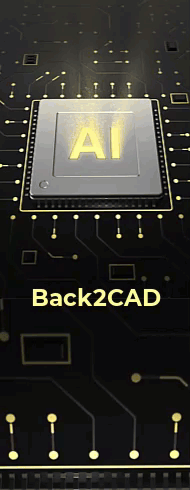Render Settings - Shadows tab |
|
|
Specify shadow options used when rendering drawings. Changes to these settings do not apply immediately to a previously rendered image; use the Render or Full Render command again to see your changes. Render settings are saved in the drawing file. DIALOG BOX OPTIONS Number of Shadow Samples per Light Select the quality of soft shadow computations. Soft shadows from area lights, that is, lights that have some non-zero diameter, are calculated by taking multiple samples of the light at each point in the image. The higher the number, the more accurate the lighting calculations will be, but the longer the rendering process will take. Number of Ray Reflections Enter the number of light reflections or transmissions the renderer considers during shadow depth calculations. If the rendered image contains several mirrored surfaces that face each other, the renderer could spend a considerable amount of time bouncing rays of light back and forth between the mirrored surfaces. The shadow depth option controls this by only allowing the renderer to consider a specified number of "bounces." Each time a light ray hits a surface and reflects off of it, or travels through it if the surface is transparent, the "depth" of the ray is increased. Adaptive Shadow Samples Slide the bar to the desired number of samples used for adaptive shadow testing. Adaptive shadowing is an algorithm used to speed up the rendering process when rendering images that have multiple light sources. This algorithm identifies which light sources are most significant for each part of the scene and only directly samples those lights. The light cast by less significant light sources is estimated based on statistical techniques. If the slider is set to 0, all of the light sources will be tested and shadows will be calculated exactly. If the slider is set to 1, only the strongest light source at each pixel will be tested and the contributions for other lights will be estimated. The higher the value, the quicker the rendering but the more approximate the lighting calculations. Adaptive shadowing is only used when Rendering Quality is set to High Quality or Very High Quality on the General tab. Tell me about...How do I... |

|
© Copyright 2022. BackToCAD Technologies LLC. All rights reserved. Kazmierczak® is a registered trademark of Kazmierczak Software GmbH. Print2CAD, CADdirect, CAD.direct, CAD Direct, CAD.bot, CAD Bot, are Trademarks of BackToCAD Technologies LLC. DWG is the name of Autodesk’s proprietary file format and technology used in AutoCAD® software and related products. Autodesk, the Autodesk logo, AutoCAD, DWG are registered trademarks or trademarks of Autodesk, Inc. All other brand names, product names, or trademarks belong to their respective holders. This website is independent of Autodesk, Inc., and is not authorized by, endorsed by, sponsored by, affiliated with, or otherwise approved by Autodesk, Inc. The material and software have been placed on this Internet site under the authority of the copyright owner for the sole purpose of viewing of the materials by users of this site. Users, press or journalists are not authorized to reproduce any of the materials in any form or by any means, electronic or mechanical, including data storage and retrieval systems, recording, printing or photocopying.
|